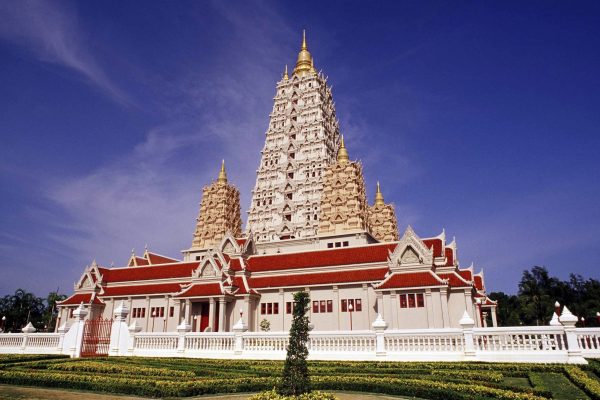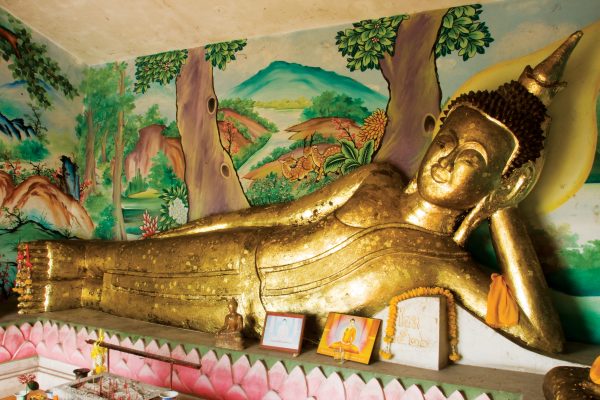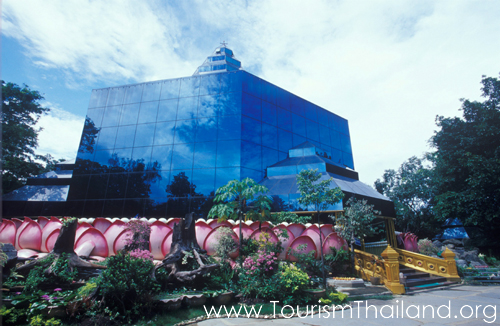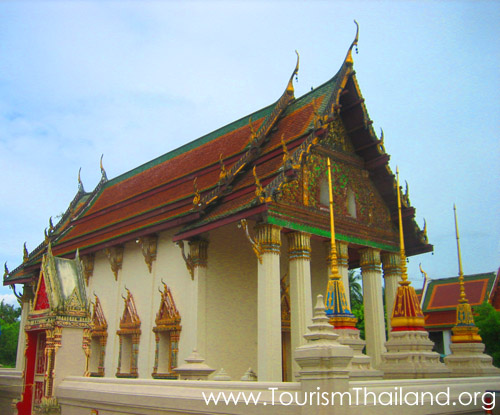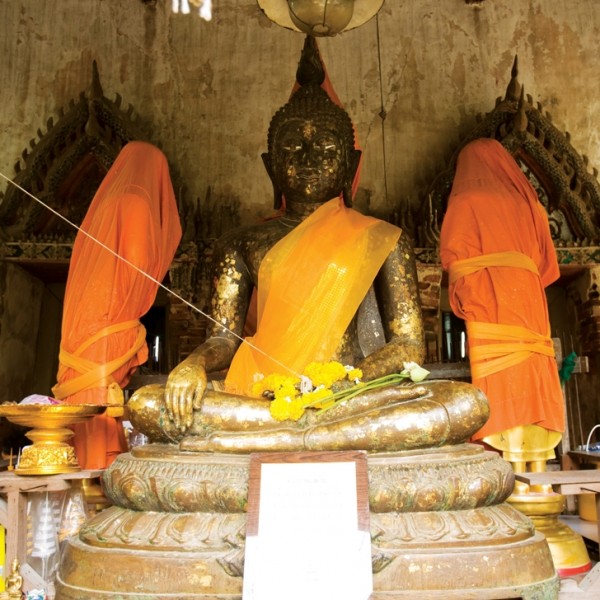
Wat Kaeo Fah
Wat Kaeo Fah is a public monastery, located on the address 45, moo 5, Tambon Bang Kanoon, Amphoe Bang Kruay, Nonthaburi. According to the historical evidence, it was built during the reign of Somdej Phra Maha Chakkraphat, the 16th king of Ayutthaya kingdom (1548-1568). However, the name of the builder wasn’t mentioned. The name “Kaeo Fah” correlates with the name of the 14th king, Somdej Phra Chao Kaeo Fah (Phra Yod Fah) (1547-1548), a son to Somdej Phra Chai Rachatirat and Queen Thao Sri Sudachan. Here are major attractions inside the temple. The old ubosot reflects the art of late Ayutthaya period. It was constructed in “Song Rong” architectural style, which is a type of ubosot surrounded by opaque walls and a few windows. The hall has unglazed porcelain roof, with decorative ‘Thep-Pa-Nom’ design (Devas pressing the hands together in the sign of respect). The eaves were adorned with ‘Thep-Pa-Nom-Ud-Plai’ pattern. The ubosot was a brick & limestone building, with weight-buffering end walls. The surrounding walls were lotus-like shape over the ridge poles. Inside enshrines the principle Buddha image called “Luang Por To” or “Luang Por Yai” on the pedestal. The ubosot holds 2 door-panels at the front, with the rear opaque wall. There are 4 windows on each side, together with window facades, embellished with stucco design. The ubosot has a bent Chinese-barque-like shape. At the front located a Palai (a veranda or a porch in Thai traditional architecture). Wat Kaeo Fah was bestowed ‘Wisung Kham Srima’ or a grant to build an ubosot in a public monastery in 1567. A ‘sema stone’ or the boundary sign was consecrated in Wat Kaeo Fah in 1571. Kam Paeng Kaew (low wall surrounding the pagoda) was built in late Ayutthaya period style. It was old brick wall called ‘Kam Pang Bua Lang Jead’ with doorposts. The wall held 2 gates with posts and decorated tops, one at the North, and the other at the South. Sema Stone also reflects art in the late Ayutthaya period, it was made with red sandstone, intricately sculpted with ‘Luad-Lai-Jam-Lak’ or engraved patterns. Sema stones were enshrined on superimposed Singha-footed pedestals, situated in arched facades called ‘Kub-Chang’ (or howdah). There are 8 sema stones surrounding the ubosot. The chedis were constructed in late Ayutthaya architectural style. There are 2 types of chedi; a chedi with 12 indented corners (located at the outer 4 corners of Kam Paeng Kaew), and a gigantic chedi with 20 indented corners (located at the back of the ubosot, enshrined on a superimposed Singha-footed pedestal on layers of receding lotus mouldings). These are the chedi styles since Sukhothai and Ayutthaya period up until Rattanakosin period.

